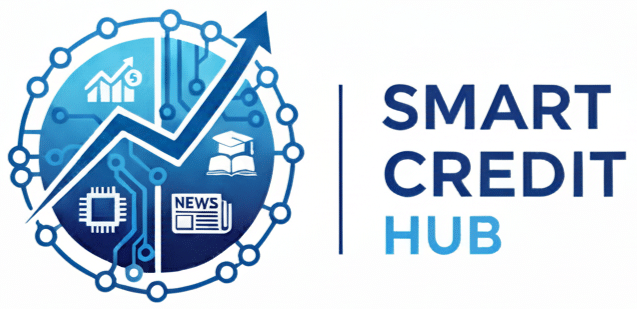Today, almost 70% of employers prefer skills over degrees. This shift highlights the importance of understanding what a learning path is for career planning.
A learning path is a sequence of educational steps designed to build specific skills and knowledge over time. It’s like an academic GPS that guides you through courses, projects, certifications, and assessments towards clear career goals.
Related content:
You will stay on the same website.
When planning your career, a learning path helps turn your dreams into specific actions. It shows you which courses to take, which small credentials to get, and which practical projects can help you move up or switch careers.
This concept is useful for students, people starting their careers, those looking to change careers, and companies creating training programs. It’s about having a plan to move from where you are to where you want to be in your career.
In an age where skills and quick certifications often matter more than traditional degrees, knowing how to map out your learning is key. It helps both individuals and organizations keep up in a rapidly evolving job market in the U.S.
Definition of a Learning Path
A learning path is a guided journey that takes someone from beginner to expert. It lays out steps, materials, and tests. This way, people move forward without confusion. Companies like Coursera for Business and LinkedIn Learning make learning packs for popular jobs.
Purpose and Importance
This path has one main goal: to teach people the skills they need for a job or certificate. Companies use it to fix skill shortages and match training with their plans. It’s a way to see how training money pays off.
For those learning, having a clear path means less stress and faster skill learning. Knowing each step makes it easy to see progress and feel more confident. A good plan means better job chances by focusing on skills that matter.
Benefits of Structured Learning
This method stops repetitive learning by making sure basic knowledge comes first. Starting with basics before moving to complex topics like advanced machine learning saves study time.
Pathways that give badges or certificates make success easy to see. Both employers and learners can prove achievements easily. This helps with hiring and moving up in a job.
Setting clear, small goals helps keep learners going and lowers quitting. It turns big dreams into smaller, doable goals.
Good plans make learning fair and open by treating everyone the same across wide areas. Online courses and scholarships bring learning to more people everywhere.
Key Components of a Learning Path
A clear learning path makes complex goals easy by breaking them into steps. It shows the order to learn things and how each step helps reach mastery. Here are the main parts that make a learning path useful and doable.
Skills and Competencies
Competency mapping changes job roles into specific skills. For a software developer, this could be algorithms, system design, and version control. It organizes skills into basic, transferable, and advanced levels. This tells us which skills to focus on now and which to develop over time.
Frameworks like O*NET and the European e-Competence Framework provide clear terms. They make sure training matches what employers expect. Soft skills such as communication and teamwork are added to technical skills for overall growth.
Learning Resources and Materials
An effective path uses different kinds of materials. It includes online courses, textbooks, certifications, labs, GitHub projects, and more. Picking the right resources saves time and makes learning more relevant.
Making sure resources are high-quality is important. Checks from accredited groups, feedback from users, and company recommendations confirm their value. Mixing live workshops with self-paced learning helps all kinds of learners stay on track.
Assessment and Evaluation
Assessment strategies help measure learning and ensure mastery. Quizzes and tasks offer quick feedback. Proctored exams and project reviews prove final skill levels.
Credentials can be digital badges, certificates, and microcredentials from places like Credly or universities. They show off skills clearly. Learning analytics help review and improve the learning path by tracking success and progress.
Types of Learning Paths
Different learners take different paths to build skills and reach their career goals. This overview helps readers find the best fit for their needs. It explores structured programs, casual study, and mixed approaches.
Formal programs and credentials
Formal learning paths have a set curriculum, timelines, and tests. They include university degrees and training for specific job promotions. These are often needed for jobs like nursing and highlight achievement with licenses.
Ad-hoc and experience-based study
Informal learning uses videos, articles, and practice on the job. Startups and tech teams like this approach for quick learning. Sites like YouTube and GitHub are full of useful resources. Here, speed and immediate usefulness are key, not formal recognition.
Personalized, learner-led plans
A self-directed learning path mixes courses and informal resources. Learners pick from MOOCs, mentorships, and projects to meet their targets. To succeed, you need discipline and access to good materials.
| Characteristic | Formal Learning Path | Informal Learning Pathways | Self-Directed Learning Path |
|---|---|---|---|
| Structure | High: set curriculum and schedule | Low: flexible, ad-hoc content | Medium: learner-defined sequence |
| Recognition | Credits, diplomas, licenses | Experience-based credibility | Portfolio and verified certificates |
| Best for | Regulated professions and formal advancement | Rapid skill updates and niche topics | Career changers and lifelong learners |
| Typical platforms | Universities, community colleges, corporate academies | YouTube, blogs, GitHub, podcasts | MOOCs, bootcamps, mentors, personal projects |
| Success factors | Accreditation and consistent assessment | Curation and real-world practice | Discipline, resource quality, self-assessment |
Creating a Learning Path
Making an academic plan starts by connecting your dreams to your actions. This part will show you how to create a study path. It will align your everyday efforts with your future career goals.
Identifying Career Goals
Start by setting clear job goals, salary expectations, and timelines using SMART goals. Use LinkedIn and Indeed to understand job needs and what experience you’ll need for your desired role.
Getting advice from mentors, bosses, or industry experts can confirm if your goals make sense. This makes your academic plan clear and something you can measure.
Researching Required Skills
Compare your skills with job descriptions to find gaps. Look at O*NET, Gartner reports, and Burning Glass data for key skills needed in specific roles.
Figure out which skills are essential and which are just nice to have. This helps you learn in order, focusing on the most important skills first.
Establishing Milestones
Create short-, medium-, and long-term goals, like finishing a basic course in three months, getting a certification in nine months, or showing off a portfolio in a year.
Tools like tests or mentor approvals can show you’re ready for the next step. Rewards, like earning badges, getting recognized, or updating your portfolio, keep you motivated.
| Phase | Example Milestone | Verification | Timeframe |
|---|---|---|---|
| Discovery | Complete market research and set SMART targets | Documented goal sheet and mentor feedback | 2–4 weeks |
| Foundation | Finish foundational course and basic projects | Course certificate and project review | 3 months |
| Competency | Earn industry certification and build portfolio | Certification badge and portfolio presentation | 6–9 months |
| Advanced | Lead a real-world project or secure desired role | Employer offer or project outcome report | 9–12 months |
Learning Path Formats
Different formats help professionals pick the right training. It’s all about finding what matches their time, budget, and career goals. This section looks at popular ways to learn and shows how they help with skills and getting ready for jobs.
Online Courses and Certifications
Coursera, edX, Udacity, Pluralsight, and university programs offer courses online. Learners can go at their own speed. Cisco, AWS, and PMI offer credentials that fit with job roles.
These options let people learn when they want, offer lots of courses, and can lead to college credit or certifications. Look for accreditation, instructor background, partnerships with employers, and reviews from other learners to find quality programs.
Workshops and Bootcamps
Workshops and bootcamps are for learning fast in a short time. They focus on skills you can use right away. Coding bootcamps like what General Assembly and Flatiron School offer are good examples, as are UX design workshops that help build a portfolio.
These programs are great for quick learning and have partnerships to help with getting a job. When picking one, think about if they help with finding a job, offer support, and use tools you’ll work with in the real world.
Mentorship Programs
Mentorship can be one-on-one coaching, group sessions, or part of a company’s program. MentorCruise and similar services match learners with pros for focused advice.
These programs offer custom feedback, career tips, help with meeting people, and make sure you’re moving forward. They’re most effective when combined with courses and projects, to give what you’re learning more context and speed up your development.
Role of Technology
Technology changes how we learn by making lessons flexible, measurable, and easy to get. It links learners to great courses and lets them learn at their own pace. This is key when creating learning paths that boost real skills and careers.
E-Learning Platforms
Sites like Coursera, LinkedIn Learning, Udemy, and edX have lots of courses and work with colleges and companies. They suggest courses and paths that fit what learners need.
They also have forums and projects for hands-on learning. These platforms make education available to everyone, everywhere, following clear steps.
Learning Management Systems (LMS)
Tools like Moodle, Canvas, Blackboard, and SAP Litmos help schools offer structured courses. They let teachers track progress and report on it.
LMS also works with HR tools to help with training and managing talent. They use data to show how well learners do and where to improve.
Mobile Learning Apps
Apps like Duolingo, SoloLearn, and mobile Coursera and Udemy make learning anywhere possible. They suit short learning sessions and remind users to keep at it daily.
They use short lessons, fun achievements, and work on several devices to help remember what’s learned. Mobile apps also work offline, perfect for busy people to keep learning anytime.
Customization of Learning Paths
Effective learning programs have a plan tailored for each learner. This personal touch increases engagement and helps skills develop faster. We’ll explore how to customize learning paths and keep courses up-to-date with actual outcomes.
Tailoring to Individual Needs
Learner profiles are the starting point. They use assessments, past learning, and career objectives to build a foundation. This foundation helps pick the right modules, set the pace, and choose how to assess progress.
Big names like Salesforce and Coursera offer choices to suit different needs. Newcomers might speed through skill-building tracks. More experienced workers might study leadership and strategy.
Learning paths can fit everyone with options like different kinds of tests and flexible timelines. These options are great for busy workers and people looking to change careers.
Adapting Based on Feedback
Programs need to evolve as students progress. Collecting feedback, tracking performance, and getting employer insights are key. This process identifies what’s working and what’s not, emphasizing valuable lessons.
Adaptive learning platforms fine-tune challenge levels and recommend resources on the fly. Tools like Knewton help tailor exercises to a learner’s current skills, expanding their knowledge faster.
Trying out courses with pilot groups and beta testing them ensures they’re effective. Using job placements, skill checks, and employer feedback tweaks the course order. This approach keeps learning paths in line with what the job market needs.
Importance of Continuous Learning
Continuous learning creates a strong career path. It helps workers avoid losing skills and find new opportunities.

Staying Relevant in the Workforce
Technology changes fast, making some skills outdated quickly. Companies like Amazon and Microsoft want their staff to update skills with courses and microcredentials. This training can lead to better jobs and promotions.
Learners who keep up with new skills fit job needs better. Companies offer things like tuition help and LinkedIn Learning to support continuous learning.
Adapting to Industry Changes
Gartner and McKinsey reports show a growing need for AI, cloud computing, and data analytics skills. Keeping up with these trends helps workers pick the right courses to improve their skills.
Learning in modules makes it easier to switch roles, like from traditional IT to cloud engineering. Grants and company training help those needing structured learning.
Valuing continuous learning keeps professionals adaptable. Being dedicated to learning keeps them competitive for future opportunities.
Assessing Progress on a Learning Path
Assessing progress shows learners and managers what’s working and what’s not. It makes clear how someone is moving forward in their learning. Regular check-ins help pinpoint what to do next.
Tracking skill development involves looking at clear signs of improvement. This can be how well someone understands a subject, completing courses, scoring on tests, feedback on projects, and how quickly they learn new things. Tools like Canvas or Coursera have dashboards that make it easy to see these trends.
Organizations use online platforms and badges to show off achievements. HR and learning teams connect these outcomes to job performance and growth opportunities. This helps in making decisions that support learning over time.
Reevaluating goals is about reviewing progress regularly. Doing this every few months allows for adjusting to new market trends or personal goals. Advice from mentors and updates from the job market can signal when to change direction.
Keeping an up-to-date record is key. A career development plan that includes achievements and future goals is helpful for reevaluation. This makes it simpler to see how past goals align with current skills.
It’s good to use both tools and simple measures. Combining dashboards, checklists, and reviews makes understanding development both detailed and broad. This approach ensures more effective and practical tracking of skills.
| Focus Area | Metric | Tool | Review Frequency |
|---|---|---|---|
| Technical Mastery | Assessment scores, project evaluations | Learning Management System dashboards | Quarterly |
| Professional Competencies | Competency checklists, 360 feedback | E-portfolio, HR performance tools | Biannual |
| Certifications | Course completion, badge verification | Credly, LinkedIn Learning | As achieved |
| Career Direction | Market demand, mentor recommendations | Labor market reports, mentor sessions | Quarterly or on notable shifts |
Learning Path Collaborations
Learning paths grow when learners join with others like mentors and schools. We’ll see how partnerships and shared learning help with skills and careers.
Networking opportunities pop up in group courses and study circles. Places like IEEE or the American Nurses Association are great for this. People share advice, solve problems together, and get job leads faster.
At industry gatherings like conferences and online events, learners can present their work. They also meet bosses. Alumni groups offer help, mentorship, and tips for career steps.
Working with teachers keeps learning in line with job needs today. Schools and certifiers often work with companies to make courses that fit job roles.
Programs like edX MicroMasters bring experts to teach. This gives learners hands-on advice and help, making the course better and them more job-ready.
Advisory groups with schools and business leaders watch over skills needed and suggest changes. They make sure collaborations in learning are up-to-date with new tools.
- Peer learning: group support and study for honing skills.
- Events: places to show off skills.
- Institutional ties: partnerships for learning that fits jobs.
- Expert access: help from instructors and advice for the real world.
Learning Paths in Different Industries
In each industry, learning paths help professionals grow their skills and advance in their careers. Every field has unique training requirements, qualifications, and practical experiences. The correct learning journey can make starting quicker, support gaining specialized knowledge, and keep professionals updated on the latest practices and tools.
Technology and IT
The tech world needs flexible, updatable learning methods. Starting out in tech usually means taking on roles like help desk support or junior developer. To climb higher, like becoming a cloud architect or data scientist, professionals often get certificates from AWS, Google Cloud, CompTIA, and Microsoft.
Hands-on labs, showcasing projects on GitHub, and participating in hackathons prove one’s skillfulness. Keeping certifications current and demonstrating real-world project experience are key for job advancement.
Healthcare
Healthcare careers start with formal schooling and obtaining a license. The path for healthcare workers usually goes through accredited degree programs tailored for nurses, physician assistants, and therapists. They must meet state and hospital requirements.
To stay proficient, healthcare professionals pursue ongoing education, earn CME credits, and seek specialized certifications. The growing roles of informatics and telehealth introduce new, cross-disciplinary training. Being good at talking to patients and working in teams are always essential skills.
Business and Management
Paths in business guide people from being analysts to managers and then to directors. Learning in business and management mixes finance, leadership, and project management skills. Courses like PMP and executive education from prestigious schools fast-track skills for higher positions.
A leader’s success lies in making informed decisions, managing stakeholders, and understanding digital transformation.
| Industry | Typical Starting Role | Progression Milestones | Key Credentials and Activities |
|---|---|---|---|
| Technology and IT | Help Desk, Junior Developer | Systems Admin → Cloud Architect → Data Scientist | AWS, Google Cloud, CompTIA, Microsoft certs; GitHub portfolio; hackathons |
| Healthcare | Registered Nurse, Clinical Assistant | Specialist → Advanced Practice → Administrative or Clinical Lead | Accredited degrees; state licensure; CME credits; telehealth and informatics training |
| Business and Management | Financial or Business Analyst | Manager → Director → Executive | PMP, executive programs (Harvard, Wharton); leadership courses; analytics training |
The Future of Learning Paths
The next decade will change how we build careers. Personalization, credentialing, and immersive tools will make learning paths more flexible and focused on skills. Employers and learners will want clear progress steps that connect training directly to job outcomes.
Trends in Education Technology
Platforms like Coursera and edX are using AI to suggest modules based on how you perform. This makes learning journeys customized and speeds up skill mastery. Then, microcredentials from places like Credly and university programs allow for learning to be stacked towards degrees.
Also, immersive tech is becoming key in healthcare and manufacturing training. With augmented and virtual reality, learners can practice complex tasks in safe, virtual spaces. Tools that assess automatically offer quick feedback, helping learners get better faster.
Lifelong Learning as a Norm
Companies like Amazon and U.S. government efforts promote reskilling through partnerships with community colleges and tuition help. This change makes ongoing learning a key part of how we plan our careers, not just something we do sometimes.
There are clear economic benefits too. Training that matches what the job market needs reduces unemployment issues and increases productivity. As learning paths evolve, workers will use short, credential-focused routes that adjust to demand changes.
Case Studies of Successful Learning Paths
This section shares stories about structured programs helping people transition into new careers. It looks at successful cases in tech, healthcare, and business. These stories offer lessons on growing learning opportunities.
Notable Examples in Various Fields
Google Career Certificates and the IBM Data Science Professional Certificate are tech game-changers. They offer a new way into IT and data roles without needing a college degree. These initiatives combine real-world projects with relevant assessments and strong job placement support.
Nursing has evolved through special programs that blend learning with practical experience. These programs help hospitals quickly onboard new nurses, improving early-career retention. It’s a win-win for both nurses and healthcare settings.
In the business world, companies like Deloitte use apprenticeships and rotational programs. These experiences offer insights into various aspects of business. They prepare individuals for leadership roles by exposing them to strategy, operations, and client interactions.
Key Takeaways from Success Stories
Success in placement is tied to employer recognition of programs. High hire rates follow when training matches job needs. This approach turns education into a powerful tool for finding talent.
It’s crucial to track and share outcomes like job placements, salary increases, and retention. These metrics prove the value of learning investments. Sharing these outcomes encourages more support for these programs.
Reaching a wide audience is key to making a big impact. Offering programs online and through partnerships helps include more people. This approach not only fills more jobs but also promotes fairness.
These stories show that understanding employer needs, delivering measurable results, and reaching many learners are key to successful learning programs. They offer a guide for developing effective training that can be used by organizations everywhere.
Common Challenges and Solutions
Many professionals face hurdles in their learning paths. Challenges like picking good resources and making time for study are common. We offer solutions to make overcoming these obstacles easier.
Overcoming resource and relevance gaps.
Subpar courses can slow you down. Always check a course’s quality and accreditation. Pick programs backed by employers, and use standards from groups like CompTIA or the Project Management Institute to ensure they meet industry needs.
Overcoming motivation and completion issues.
Staying motivated is tough. Joining a group course can increase your drive. Getting guidance from a mentor and celebrating small wins will keep you on track.
Overcoming credential recognition problems.
Not every credential is valued the same. Choose well-recognized programs and certifications to boost your respectability. Also, show off your skills with a rich portfolio including GitHub projects and published articles.
Overcoming Obstacles in Learning
First, recognize your learning challenge, then find the right solution. Stick with learning paths that your employer suggests if possible. Being part of cohorts or study groups helps maintain pace. Choose brief learning modules to fit study into a hectic schedule.
Balancing Work and Learning
Combining work with study needs smart planning and negotiation. Reserve specific times for focused study. Short learning breaks and weekend or evening classes help avoid clashes with work.
Ask for your company’s support. Financial aid or days off for training lighten both costs and scheduling conflicts. Flexible work hours allow for applying new skills on the job, making your studies practical.
| Challenge | Practical Solution | Example |
|---|---|---|
| Resource quality and relevance | Vet providers, choose accredited programs, consult industry standards | Choose CompTIA or PMI-endorsed courses for IT and project roles |
| Motivation and completion rates | Join cohort-based courses, secure a mentor, set milestone incentives | Enroll in a cohort on Coursera with weekly check-ins and mentor feedback |
| Credential recognition | Pursue recognized certifications, build a public portfolio | Earn AWS or Cisco certs and showcase projects on GitHub |
| Time management with full-time work | Block scheduling, microlearning, employer-supported hours | Reserve two 90-minute blocks weekly and use 15-minute microlessons |
| Scheduling conflicts | Use hybrid learning: weekend workshops, evening modules, on-the-job tasks | Combine LinkedIn Learning evenings with weekend in-person workshops |
Resources for Developing Learning Paths
Designers of learning paths need the right materials and active networks. This guide offers resources for creating learning paths. It includes books, articles, and communities for skill growth.
Recommended Books and Articles
Make It Stick by Brown, Roediger, and McDaniel is great for learning science fundamentals. It describes how memory and practice work. Anders Ericsson’s Peak delves into mastering skills through deliberate practice. The Adult Learner by Malcolm Knowles shows how to teach adults, especially at work.
Industry reports provide insight for planning. LinkedIn’s reports reveal trends in upskilling by employers. McKinsey studies show which job skills are becoming important. Gartner guides help teams compare learning technologies. EDUCAUSE Review and Inside Higher Ed focus on research in education. Harvard Business Review has useful articles on developing skills in the workforce.
Online Communities and Forums
Professional networks and forums help solve problems and review peers’ work quickly. On LinkedIn, groups discuss curriculum design and career growth. Stack Overflow is crucial for developers needing solutions. ProjectManagement.com offers templates and answers for project managers.
Learning communities encourage working together on projects. Reddit has places like r/learnprogramming for practical advice. Slack workspaces, organized by bootcamps, help learners stay on the same page. GitHub is used for coding together and sharing learning materials.
Platforms offer credentialing and feedback. Coursera and Stack Exchange have forums for testing ideas and getting advice. Credly gives out digital badges, combining credentials with networking.
| Resource Type | Example | How It Helps |
|---|---|---|
| Books | Make It Stick; Peak; The Adult Learner | Provide evidence-based methods for memory, practice, and adult instruction |
| Industry Reports | LinkedIn Workplace Learning; McKinsey skill-shift; Gartner guides | Offer labor-market data, trends, and technology comparisons |
| Academic & Trade Journals | EDUCAUSE Review; Inside Higher Ed; Harvard Business Review | Deliver research, case studies, and practical strategies for learning programs |
| Professional Networks | LinkedIn groups; ProjectManagement.com; Stack Overflow | Enable networking, mentorship, and role-specific troubleshooting |
| Learning Communities | Reddit (r/learnprogramming, r/SEO); Slack cohorts; GitHub | Support peer learning, code review, and collaborative projects |
| Credentialing & Forums | Coursera forums; Stack Exchange; Credly | Provide feedback loops, peer review, and verified badges for resumes |
| Tools | Learning pathway tools; LMS platforms; course builders | Help map milestones, track progress, and integrate educational resources |
Conclusion: The Impact of a Learning Path
A clear learning path changes careers and organizations for the better. It turns complex training into a focused plan. This plan speeds up skill acquisition and improves job chances.
Following this path can lead to quicker promotions and better job performance. This is because the training meets real workplace needs.
Learning paths help with professional growth. They let employers see how well their training works. Employees feel more confident as they reach each goal. To move ahead faster, people should map out their learning. They should use trusted sites like Coursera or LinkedIn Learning. Getting advice from pros at places like Microsoft or IBM is also smart.
When companies support learning paths, everyone benefits. Such companies keep their employees longer and have a stronger team. This approach fixes skill gaps and helps people move up in their jobs. It matches what people learn with what jobs need.
In the future, adapting and learning throughout one’s career is key. A smart learning path helps people grow professionally. It also creates a learning culture. This keeps individuals and companies ahead in a changing job world.



